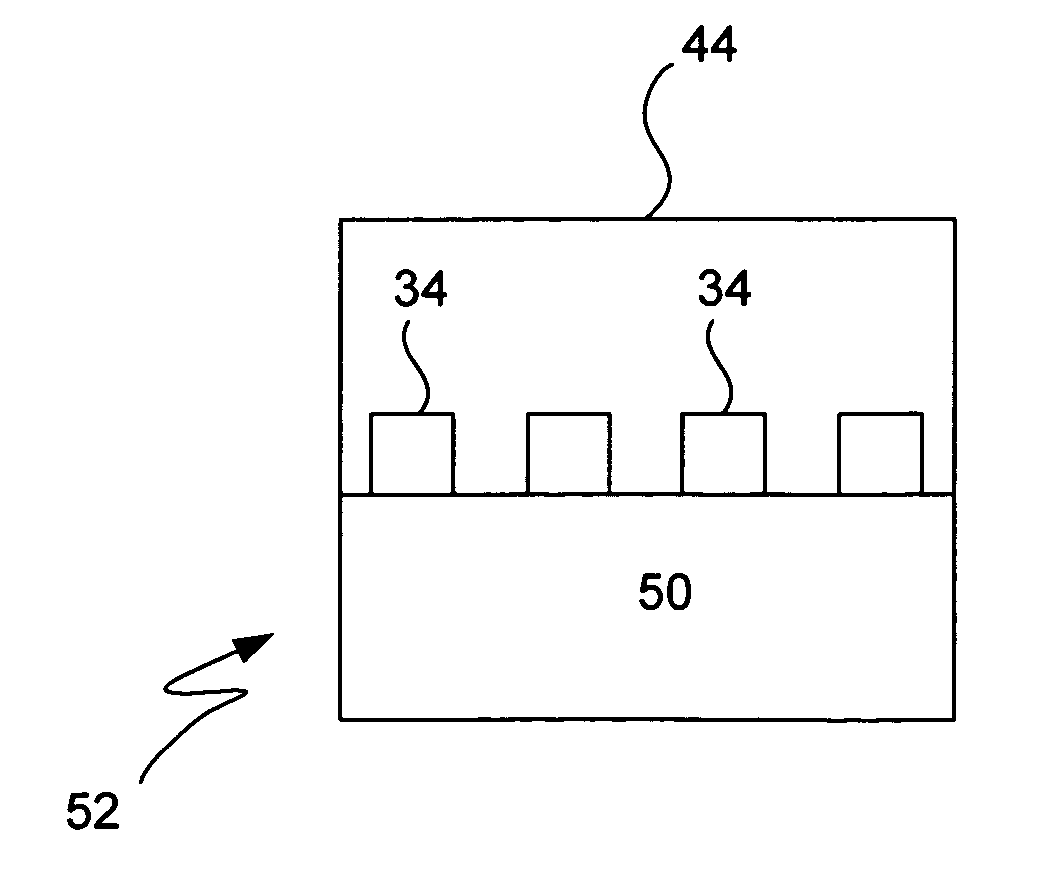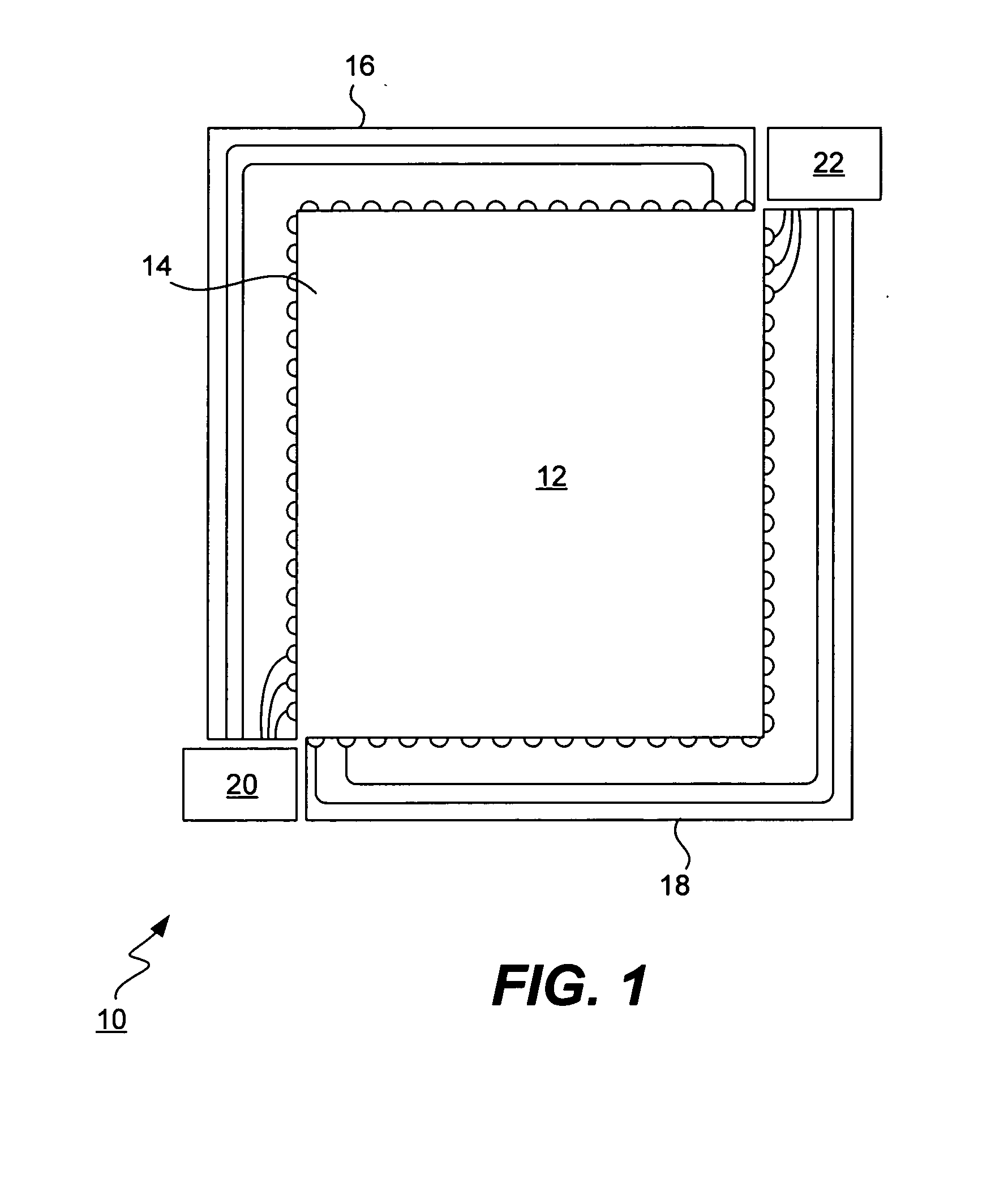Apparatus and method for a singulation of polymer waveguides using photolithography
a technology of polymer waveguides and photolithography, applied in the field of polymer waveguides, can solve the problems of reducing the life of the battery in the device, obscuring the viewing of the underlying display, and dim display
- Summary
- Abstract
- Description
- Claims
- Application Information
AI Technical Summary
Problems solved by technology
Method used
Image
Examples
Embodiment Construction
[0019]Referring to FIG. 1, a touch screen data input device is shown. The data input device 10 defines either a grid or “lamina”12 of light in the free space adjacent to a touch screen 14. The grid or lamina 12 of light is created by an X and Y input light polymer waveguide 16. An opposing receives X and Y polymer waveguide 18 is provided to detect data entries to the input device by determining the location of interrupts in the grid or lamina 12 caused when data is entered to the input device. A light source 20, such as a laser or LCD, is optically coupled to the transmit waveguide 16. An optical processor 22 is coupled to the receive waveguide 18. During operation, a user makes a data entry to the device 10 by touching the screen 14 using an input device, such as a finger, pen or stylus. During the act of touching the screen, the grid or lamina 12 of light in the free space adjacent the screen is interrupted. The optical processor 22 detects the X and Y coordinates of the interrup...
PUM
 Login to View More
Login to View More Abstract
Description
Claims
Application Information
 Login to View More
Login to View More - R&D
- Intellectual Property
- Life Sciences
- Materials
- Tech Scout
- Unparalleled Data Quality
- Higher Quality Content
- 60% Fewer Hallucinations
Browse by: Latest US Patents, China's latest patents, Technical Efficacy Thesaurus, Application Domain, Technology Topic, Popular Technical Reports.
© 2025 PatSnap. All rights reserved.Legal|Privacy policy|Modern Slavery Act Transparency Statement|Sitemap|About US| Contact US: help@patsnap.com



